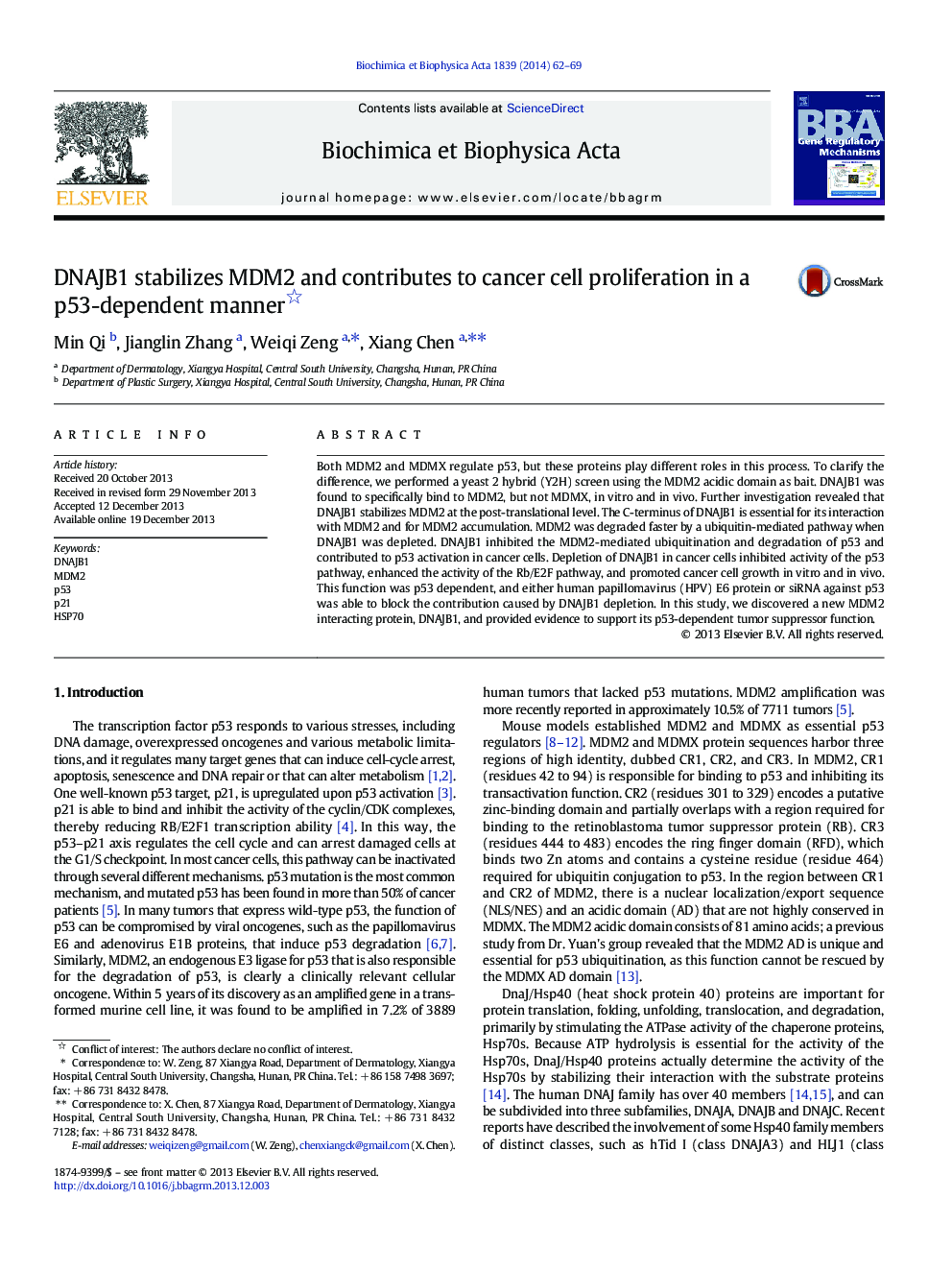| Article ID | Journal | Published Year | Pages | File Type |
|---|---|---|---|---|
| 1946436 | Biochimica et Biophysica Acta (BBA) - Gene Regulatory Mechanisms | 2014 | 8 Pages |
•We found a novel MDM2 binding protein DNAJB1 by yeast 2 hybrid screening.•DNAJB1 stabilizes MDM2 at post-translational level.•DNAJB1 stabilizes p53 at MDM2 dependent manner.•DNAJB1 attenuated p53 ubiquitination and increased p21 levels.•DNAJB1 inhibited MCF7 growth in vitro and in vivo.
Both MDM2 and MDMX regulate p53, but these proteins play different roles in this process. To clarify the difference, we performed a yeast 2 hybrid (Y2H) screen using the MDM2 acidic domain as bait. DNAJB1 was found to specifically bind to MDM2, but not MDMX, in vitro and in vivo. Further investigation revealed that DNAJB1 stabilizes MDM2 at the post-translational level. The C-terminus of DNAJB1 is essential for its interaction with MDM2 and for MDM2 accumulation. MDM2 was degraded faster by a ubiquitin-mediated pathway when DNAJB1 was depleted. DNAJB1 inhibited the MDM2-mediated ubiquitination and degradation of p53 and contributed to p53 activation in cancer cells. Depletion of DNAJB1 in cancer cells inhibited activity of the p53 pathway, enhanced the activity of the Rb/E2F pathway, and promoted cancer cell growth in vitro and in vivo. This function was p53 dependent, and either human papillomavirus (HPV) E6 protein or siRNA against p53 was able to block the contribution caused by DNAJB1 depletion. In this study, we discovered a new MDM2 interacting protein, DNAJB1, and provided evidence to support its p53-dependent tumor suppressor function.
Graphical abstractFigure optionsDownload full-size imageDownload high-quality image (117 K)Download as PowerPoint slide
